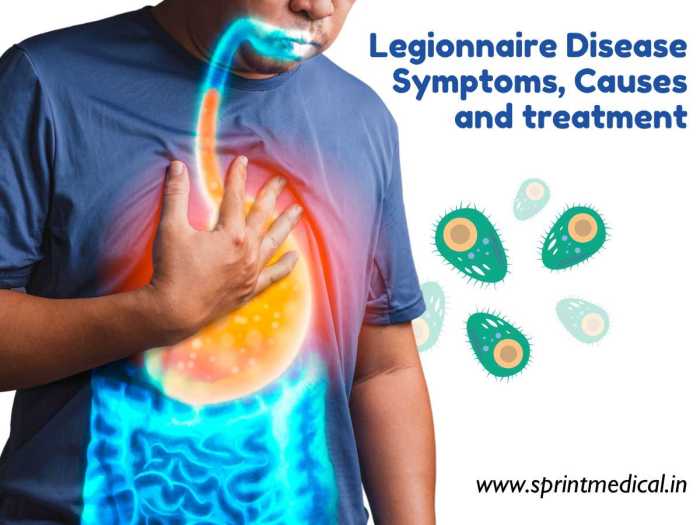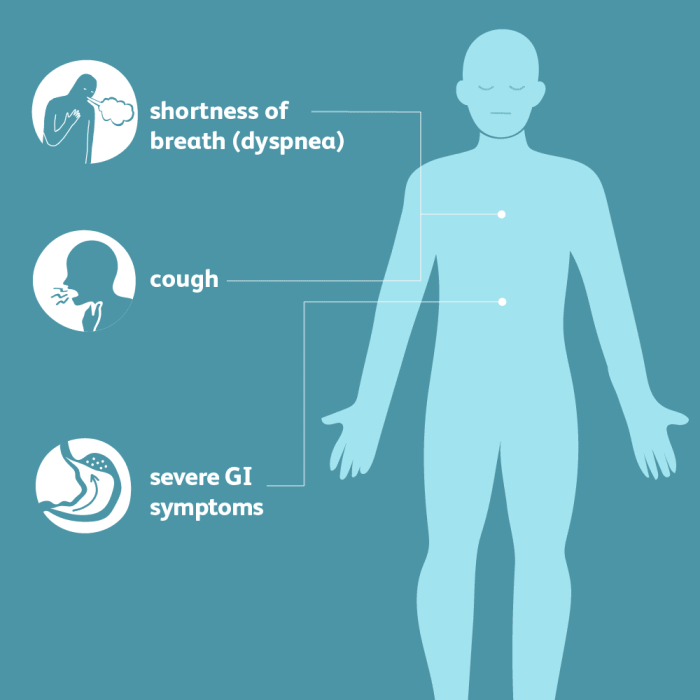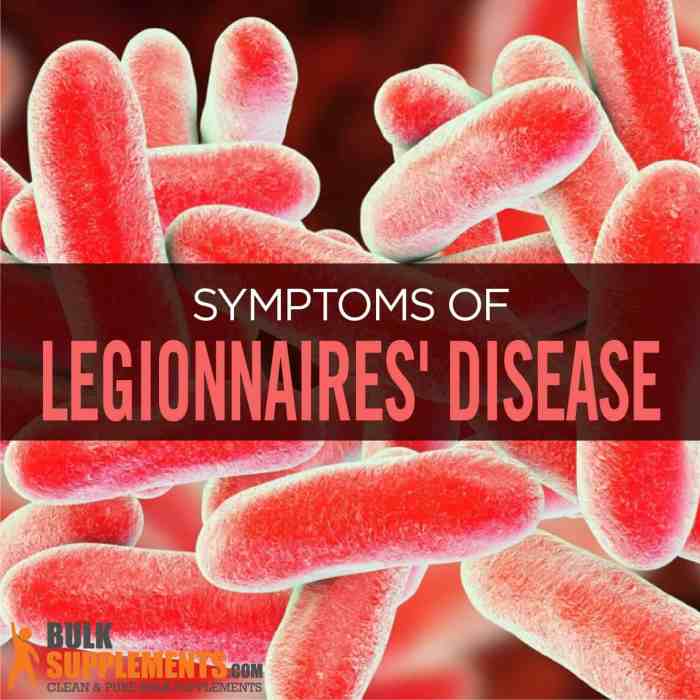Legionnaires disease symptoms can vary, but knowing them is crucial. Legionnaires’ disease is a severe lung infection caused by bacteria that thrive in warm water environments. Understanding the symptoms, transmission, and risk factors can help prevent and manage this potentially life-threatening illness.
Common symptoms include fever, chills, muscle aches, and a dry cough. As the disease progresses, shortness of breath, chest pain, and confusion may develop. Early diagnosis and treatment are vital to prevent complications.
Introduction: Legionnaires Disease Symptoms
Legionnaires’ disease is a severe form of pneumonia caused by the bacterium Legionella pneumophila. It is typically acquired by inhaling contaminated water droplets, such as from showers, hot tubs, or cooling towers.
Symptoms
Symptoms of Legionnaires’ disease typically appear within 2-10 days after exposure to the bacteria. Common symptoms include:
- High fever
- Chills
- Cough
- Shortness of breath
- Muscle aches
- Headache
- Nausea and vomiting
- Diarrhea
Legionnaires’ disease can be confused with other illnesses, such as influenza or pneumonia, but it can be more severe and may require hospitalization.
Risk Factors, Legionnaires disease symptoms

People at increased risk for Legionnaires’ disease include:
- Older adults (over 50 years old)
- People with weakened immune systems
- Smokers
- People with chronic lung diseases
- People who have recently traveled
- People who have been exposed to contaminated water sources
To reduce the risk of Legionnaires’ disease, it is important to avoid exposure to contaminated water sources and to maintain good hygiene practices.
Diagnosis

Legionnaires’ disease can be diagnosed through a variety of tests, including:
- Chest X-ray
- Blood tests
- Urine tests
- Sputum culture
Early diagnosis and treatment are important for improving outcomes.
Treatment
Legionnaires’ disease is typically treated with antibiotics. Other treatments may include:
- Oxygen therapy
- Intravenous fluids
- Mechanical ventilation
Most people with Legionnaires’ disease recover with treatment, but it can be fatal in some cases.
Prevention
Legionnaires’ disease can be prevented by taking steps to reduce exposure to contaminated water sources. These steps include:
- Using water filters
- Cleaning and disinfecting water systems
- Avoiding exposure to water droplets from showers, hot tubs, or cooling towers
Public health surveillance and education are also important for preventing Legionnaires’ disease.
Outcome Summary

Recognizing Legionnaires disease symptoms and seeking medical attention promptly is essential for effective treatment. Understanding the risk factors and preventive measures can significantly reduce the chances of contracting this infection. By raising awareness and promoting good hygiene practices, we can minimize the impact of Legionnaires’ disease.
FAQ Guide
What are the most common symptoms of Legionnaires’ disease?
Fever, chills, muscle aches, and a dry cough are the most common symptoms.
How is Legionnaires’ disease transmitted?
Inhaling aerosolized water droplets containing the Legionella bacteria is the primary mode of transmission.
Who is at higher risk of developing Legionnaires’ disease?
People over 50, smokers, and those with weakened immune systems are at increased risk.